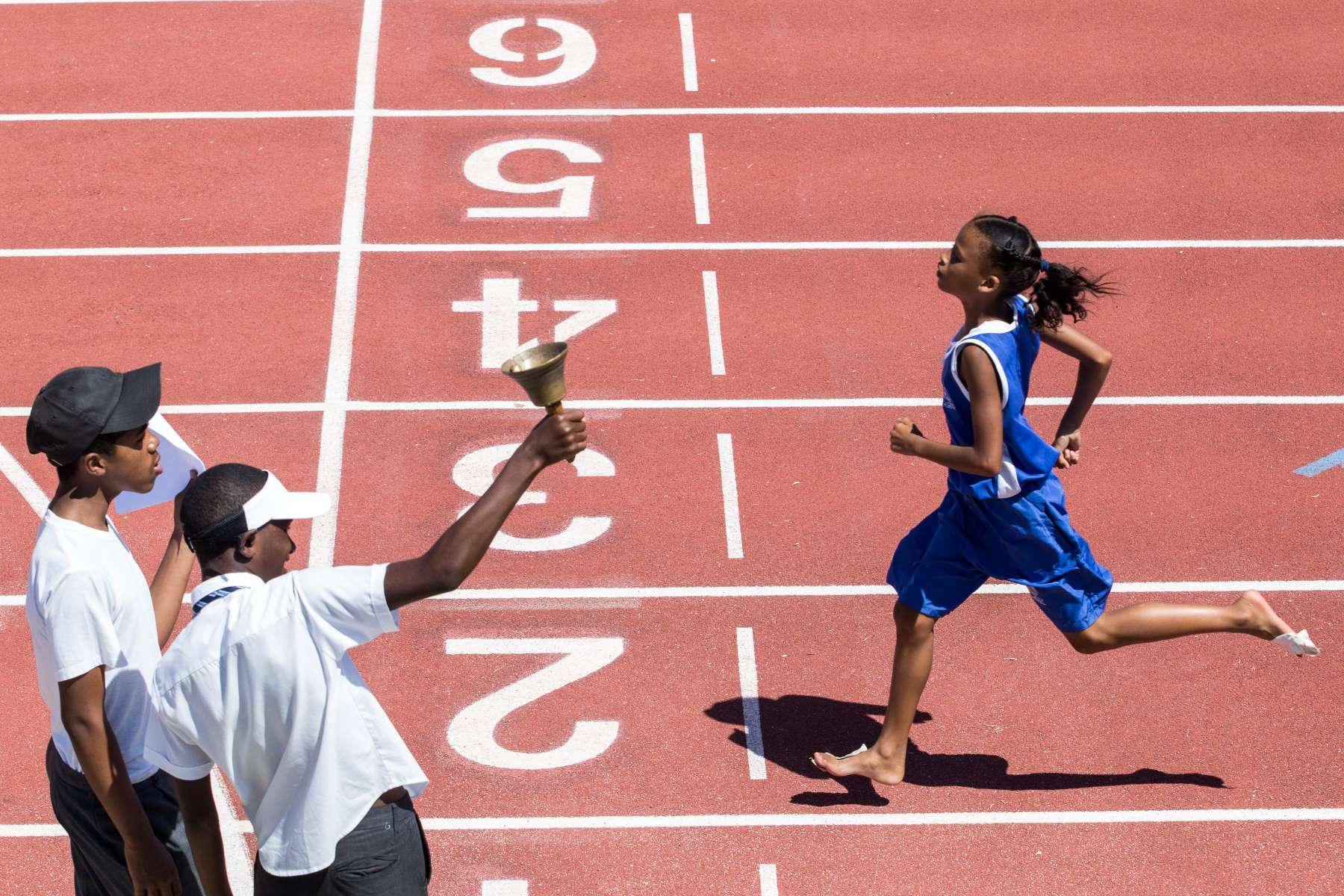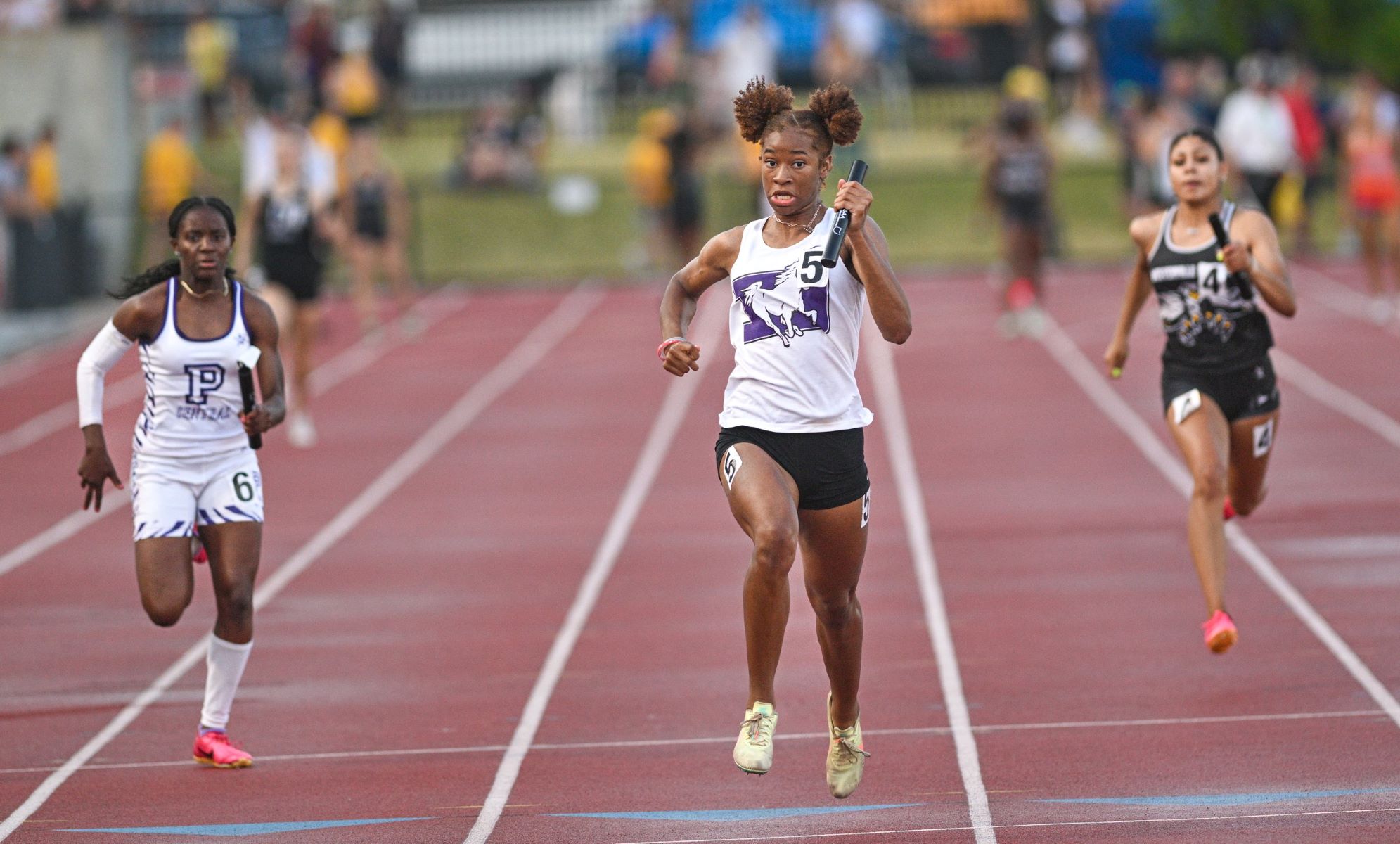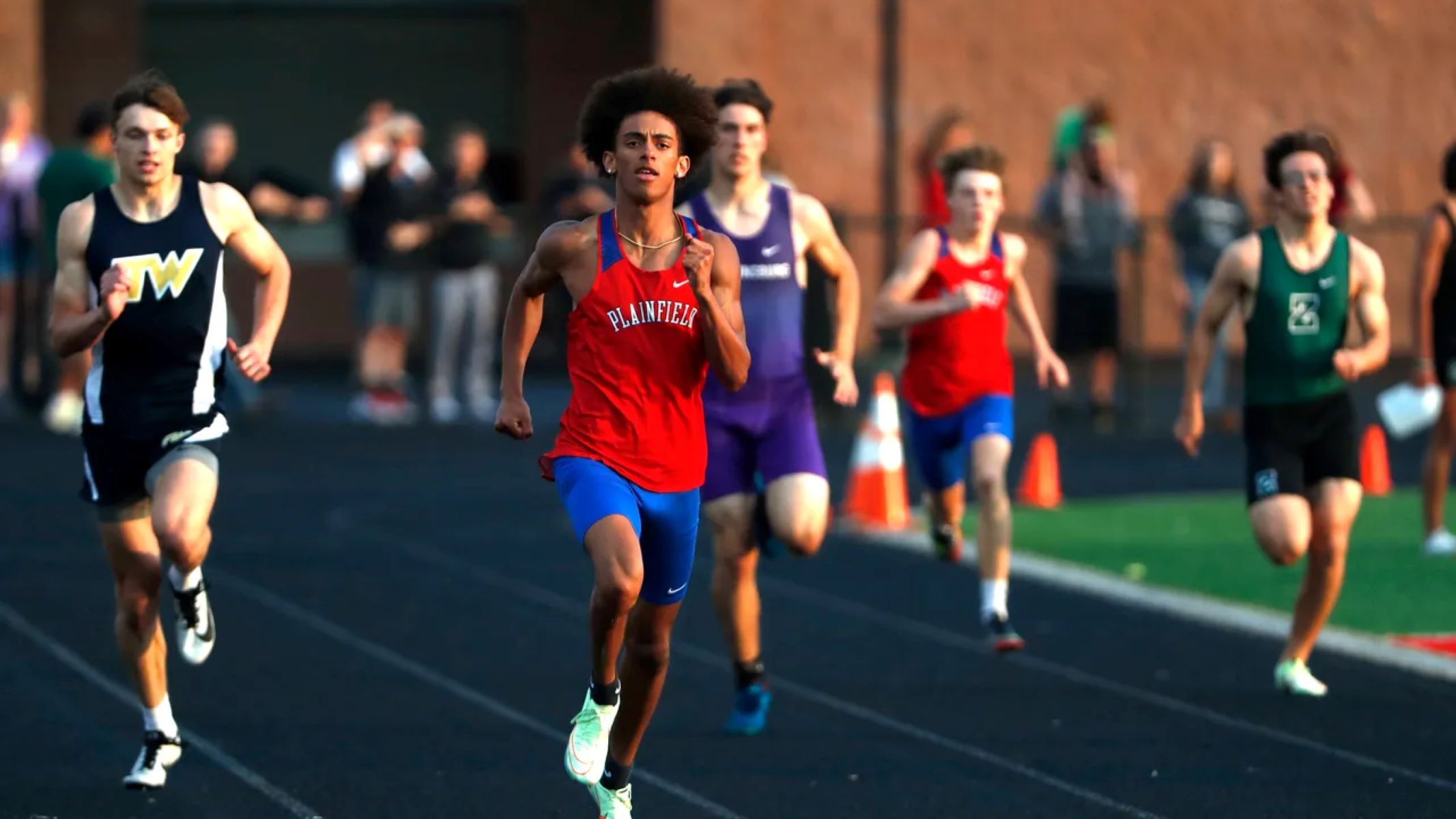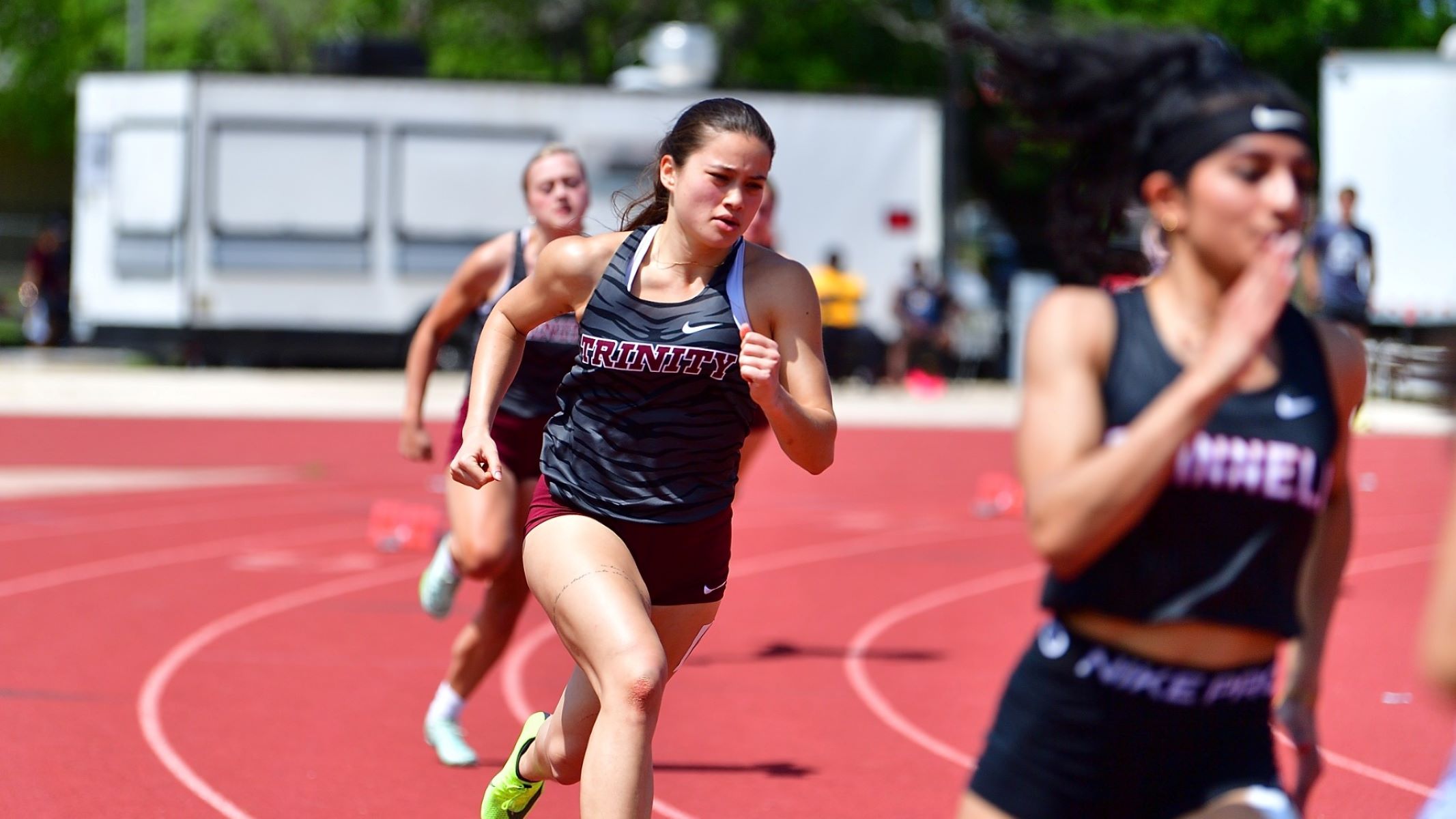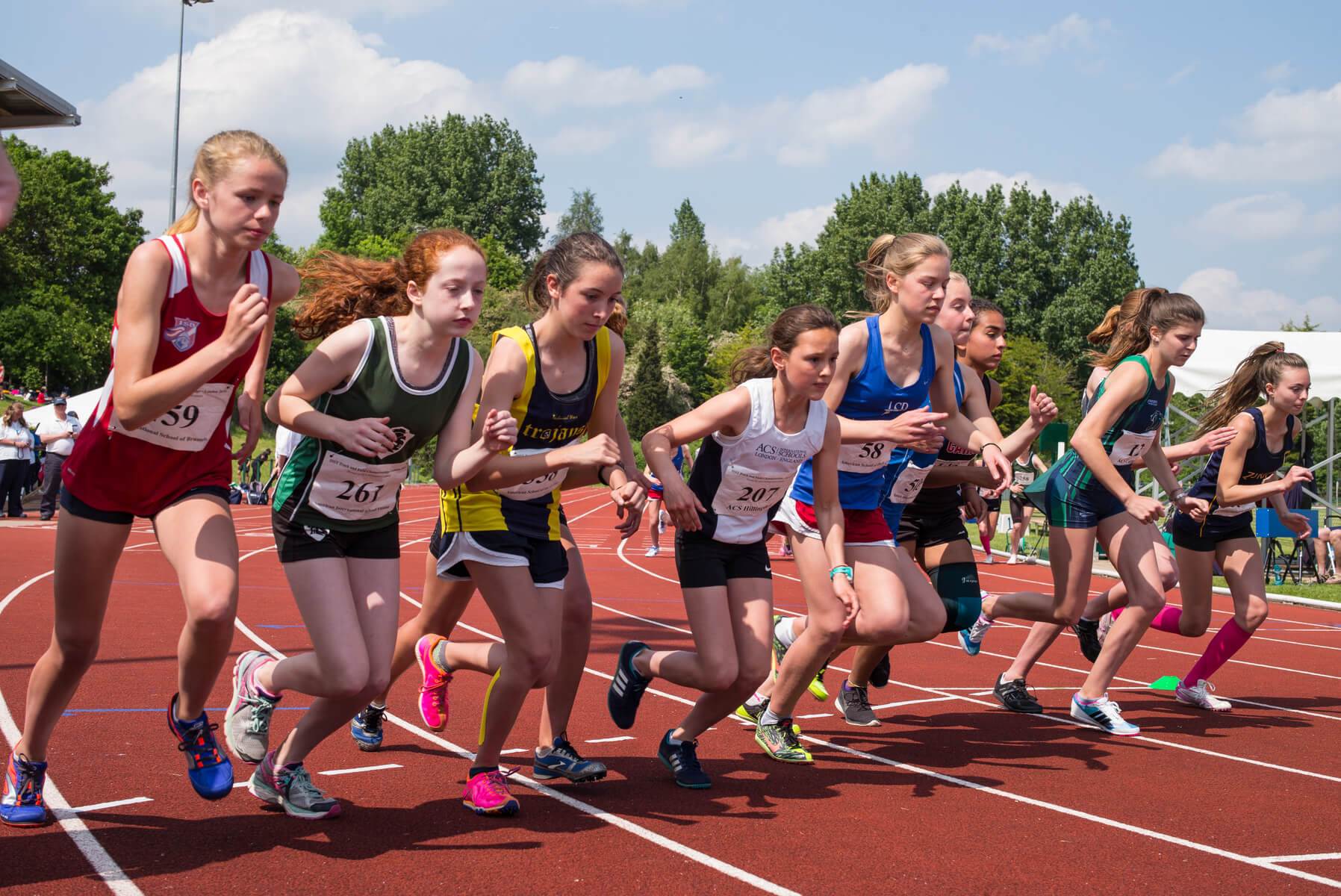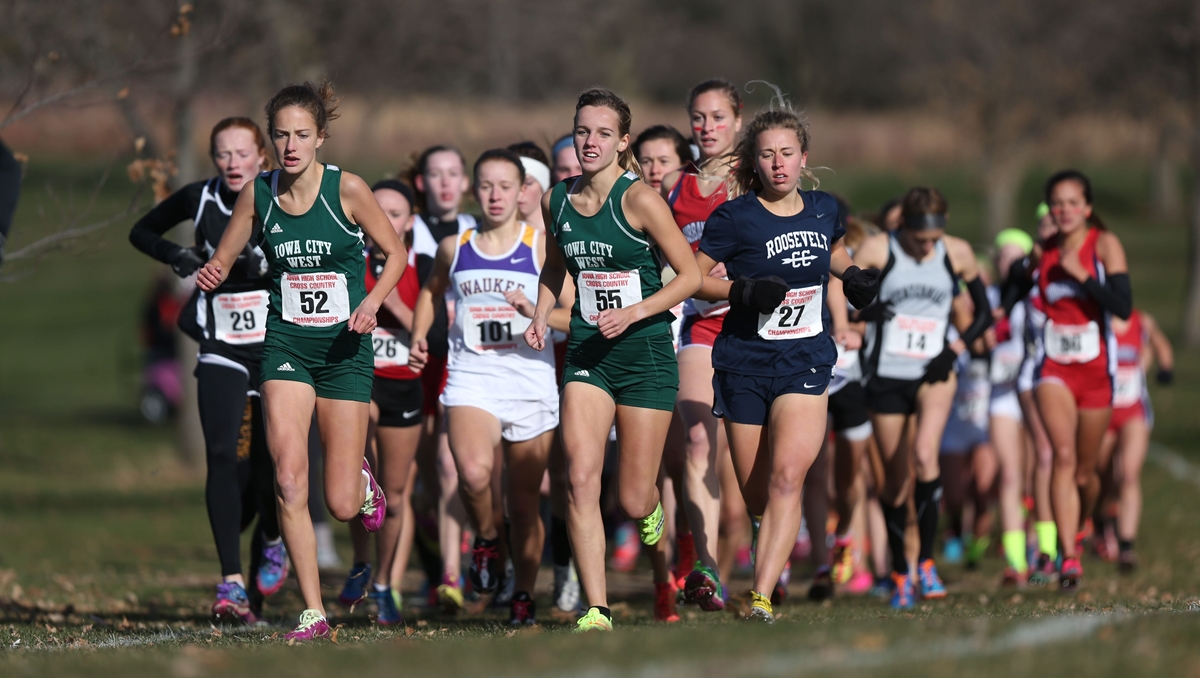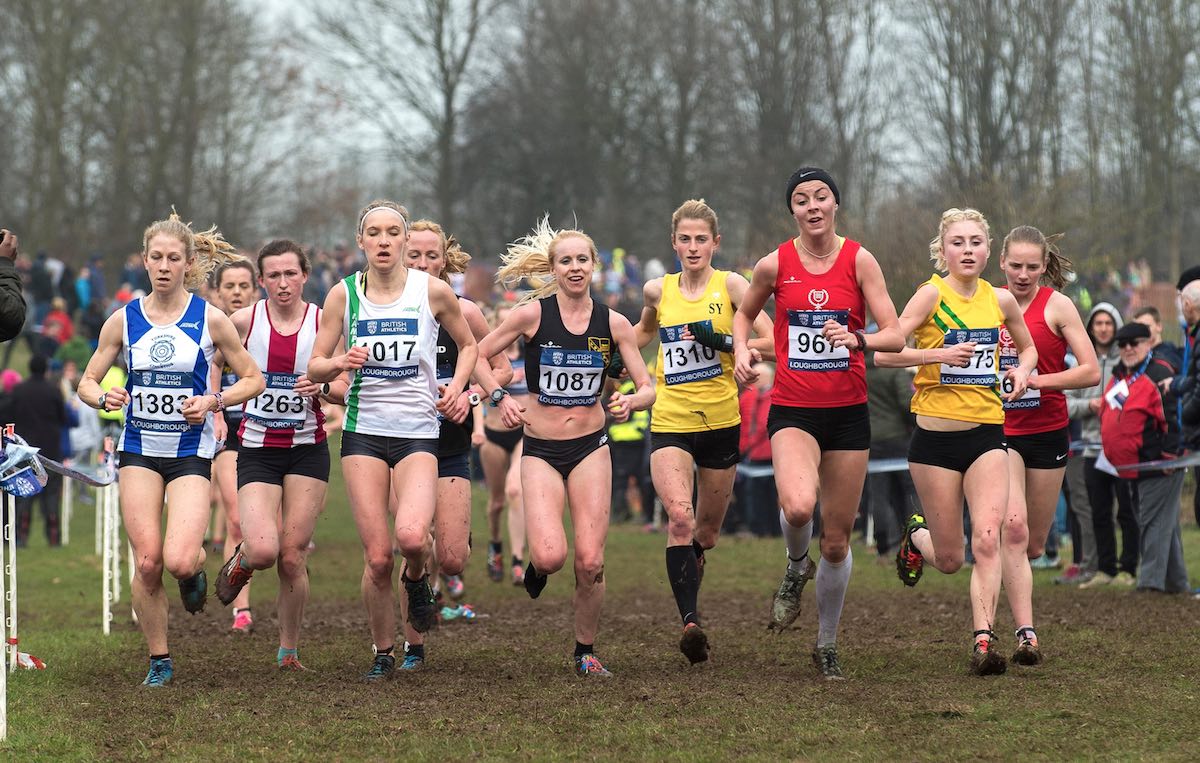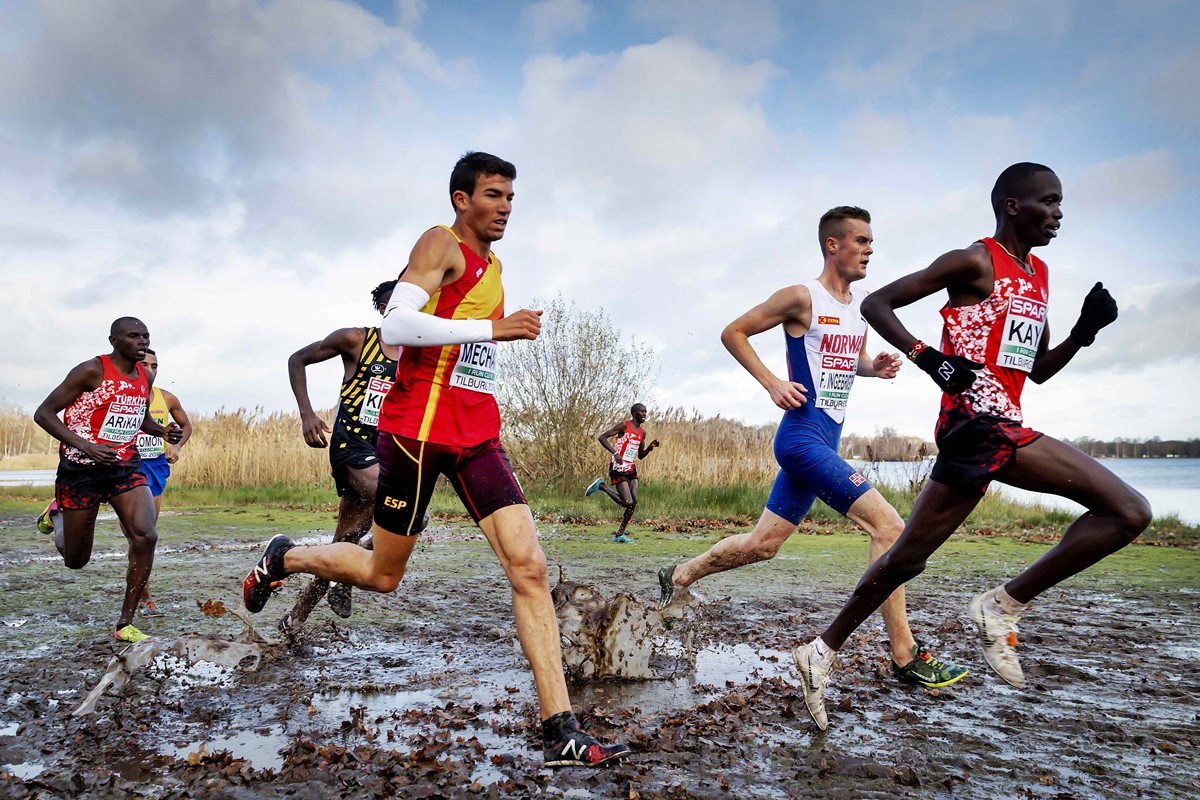Home>Misc>Featured>What Are Middle School Track And Field Events
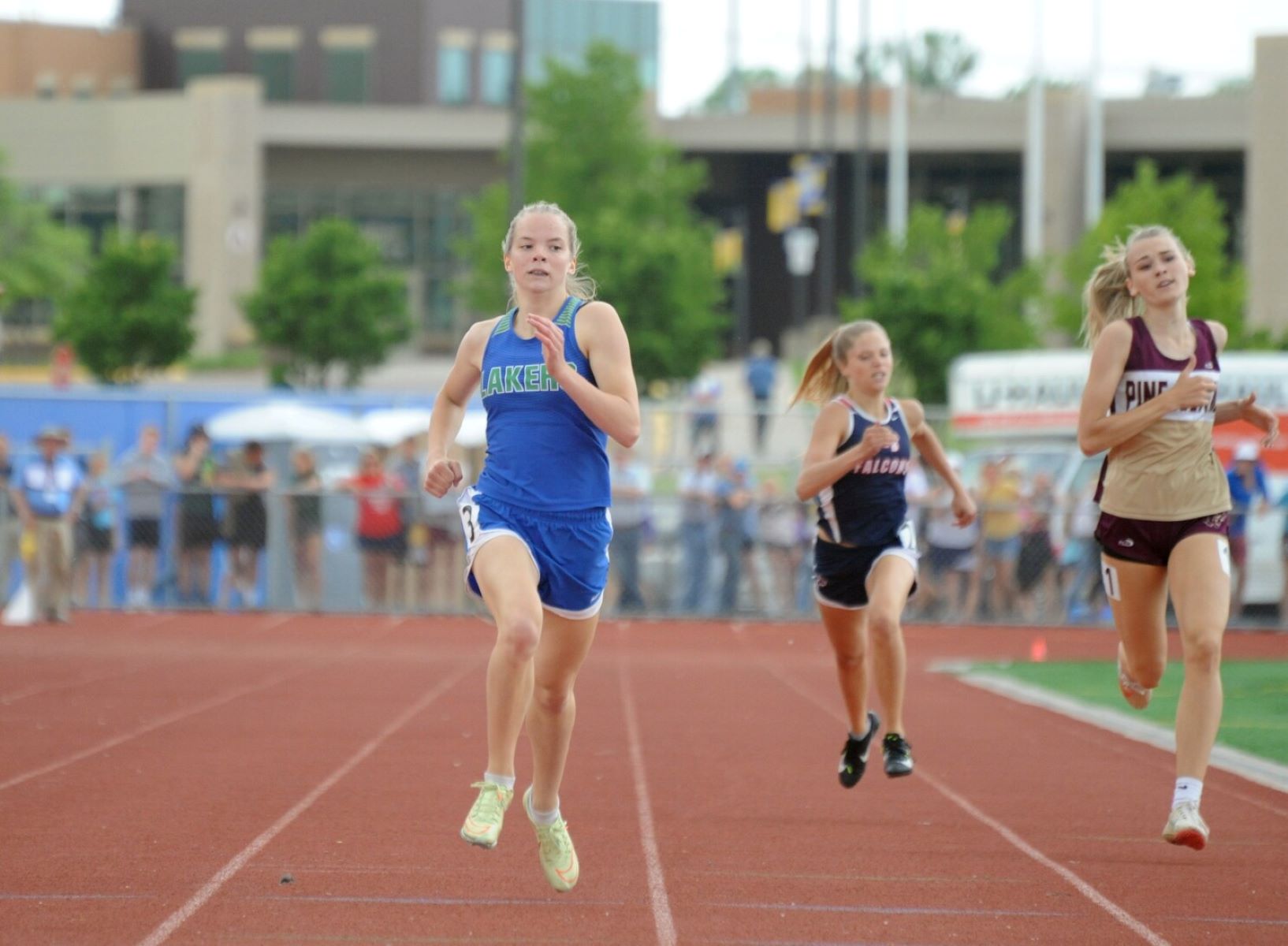

Featured
What Are Middle School Track And Field Events
Published: September 3, 2023
Discover the exciting world of middle school track and field events, from sprints to hurdles and long jumps. Stay updated on the latest featured events and results.
Introductory Paragraph
Track and field events are an integral part of the middle school sports program, offering students a chance to showcase their athletic abilities and compete against their peers. These events not only promote physical fitness but also develop essential skills such as teamwork, discipline, and perseverance. From sprinting and jumping to throwing and hurdling, middle school track and field events provide a range of exciting opportunities for students to excel in various athletic disciplines.
Participation in track and field events can have a multitude of benefits for middle school students. Not only do these events encourage overall physical fitness, but they also foster a sense of camaraderie and sportsmanship among participants. Track and field events provide an inclusive environment where students of all abilities can participate and feel a sense of belonging.
Moreover, middle school track and field events serve as a foundation for students who wish to pursue athletics at a higher level. Through training and competing in these events, students can develop the necessary skills and techniques that will be essential for their athletic future.
Whether students are aspiring sprinters, distance runners, jumpers, or throwers, middle school track and field events offer a variety of disciplines to suit their interests. In the following sections, we will explore the different types of events that students can participate in, ranging from sprinting and distance races to jumping, throwing, and other miscellaneous events. Let’s delve into the exciting world of middle school track and field!
Sprinting Events
Sprinting events are some of the most thrilling and fast-paced competitions in middle school track and field. These events test the speed, agility, and explosive power of the athletes. Sprinting events commonly include the 100-meter dash, 200-meter dash, and the 400-meter dash.
The 100-meter dash is a short and intense race where athletes compete to see who can cover the distance in the quickest time. It requires a combination of explosive acceleration, efficient running technique, and mental focus. The 200-meter dash is a slightly longer sprint that demands both speed and endurance. It challenges athletes to maintain their speed throughout the race, pushing their limits to the finish line. The 400-meter dash is a true test of stamina and speed, as athletes must maintain a strong pace for an entire lap around the track.
Participating in sprinting events not only improves an athlete’s speed but also enhances their overall athletic performance. Sprinters develop a strong cardiovascular system, explosive power, and improved coordination. These events require athletes to train and fine-tune their starts, stride length, and running technique.
Moreover, sprinting events foster a sense of competitiveness and help athletes develop mental resilience. Athletes must learn to deal with pressure and perform under high-stakes situations, such as close finishes or intense competition. These events teach students valuable lessons about perseverance, determination, and sportsmanship.
In middle school track and field, sprinting events often serve as a gateway to more specialized events for athletes who show exceptional speed and talent. Students who excel in sprinting events may choose to pursue further training and compete in longer sprinting events or even consider joining a track club outside of school for more advanced competition.
Overall, sprinting events in middle school track and field provide an exhilarating experience for athletes, showcasing their speed and athleticism while instilling important values of dedication and resilience. Whether students aspire to become the next Olympic sprinter or simply enjoy the thrill of racing, sprinting events offer an exciting opportunity for middle school athletes to shine.
Distance Events
Distance events in middle school track and field are designed to test the endurance and stamina of the athletes. These events require participants to showcase their ability to maintain a steady pace over longer distances. The most common distance events include the 800-meter run, the 1600-meter run, and sometimes the 3200-meter run.
The 800-meter run is a challenging event that combines aspects of both speed and endurance. Athletes need to strike a delicate balance between a fast-paced start and the ability to sustain their speed throughout the race. The 1600-meter run is often referred to as the mile run and is seen as the centerpiece of distance events. It demands a high level of aerobic endurance and mental fortitude, as runners need to maintain their pace for four laps around the track. The 3200-meter run, also known as the two-mile run, is a grueling test of endurance, pushing runners to their limits with eight laps around the track.
Participating in distance events offers numerous benefits for middle school athletes. These events enhance cardiovascular fitness, muscular endurance, and mental toughness. Runners develop the ability to pace themselves, improve their ability to handle fatigue and build mental resilience through long-distance running. Distance events also instill discipline and patience as athletes learn to strategize their races and make strategic decisions during the event.
For students who excel in distance events, middle school track and field can be a stepping stone to greater achievements. They may choose to continue their running journey by joining cross country teams or pursuing track and field at the high school level. Distance events provide a solid foundation for long-distance running, allowing athletes to develop the skills and endurance necessary for success in these sports.
Moreover, distance events in middle school track and field promote a sense of camaraderie and team spirit. Runners often train together and build a support system, pushing each other to improve. These events also allow students to set personal goals, challenge themselves, and celebrate their achievements as they continuously strive for improvement.
Overall, distance events in middle school track and field offer a unique opportunity for athletes to push their boundaries, develop physical fitness, and cultivate mental resilience. These events showcase not only an athlete’s athletic ability but also their perseverance and determination to conquer long distances. Whether students have dreams of becoming long-distance runners or simply enjoy the challenge of endurance, distance events provide an avenue for middle school athletes to showcase their abilities.
Hurdle Events
Hurdle events are a thrilling and challenging component of middle school track and field. These events combine speed, agility, and technical proficiency as athletes navigate a series of hurdles placed along the track. The most common hurdle events in middle school track and field include the 100-meter hurdles and the 300-meter hurdles.
The 100-meter hurdles event requires athletes to sprint over ten evenly spaced hurdles while maintaining their speed and rhythm between the barriers. This event demands a high level of coordination, quick reflexes, and precise technique. The 300-meter hurdles event further tests athletes’ endurance as they navigate a longer distance with eight hurdles to clear.
Participating in hurdle events offers several benefits for middle school athletes. These events improve athletes’ speed, agility, and jumping ability. Hurdling requires athletes to have a quick start, good running technique, and the ability to coordinate their steps and jumps over the hurdles. Athletes also develop lower body strength and explosiveness, as hurdling involves powerful strides and explosive jumps over the barriers.
Hurdle events also teach students valuable skills such as focus, perseverance, and adaptability. Athletes must learn to analyze the placement and height of the hurdles, adjust their stride pattern, and maintain a steady pace throughout the race. Overcoming hurdles requires mental toughness and the ability to quickly recover from any missteps or challenges during the race.
Furthermore, participation in hurdle events can open doors for athletes who wish to pursue track and field at a higher level. Middle school athletes who excel in hurdle events may have the opportunity to join more specialized training programs or compete in advanced competitions outside of school. These events serve as a pathway for athletes to further develop their hurdling skills and potentially pursue collegiate or professional athletic opportunities.
Not only do hurdle events offer individual challenges, but they also foster a sense of teamwork and collaboration. Athletes often train together, supporting and encouraging each other to improve their hurdling techniques. This sense of camaraderie enhances the overall experience and provides athletes with a support system as they tackle the hurdles side by side.
In summary, hurdle events in middle school track and field provide athletes with an exciting opportunity to display their speed, agility, and technical proficiency. These events develop essential physical and mental skills while fostering a sense of teamwork and camaraderie. Whether students aspire to become professional hurdlers or simply enjoy the rush of overcoming obstacles, participating in hurdle events allows middle school athletes to challenge themselves and unlock their full potential.
Relay Events
Relay events are a dynamic and thrilling component of middle school track and field, showcasing the teamwork and coordination of a group of athletes. In relay events, a team of runners work together to complete a designated distance, passing a baton from one runner to the next. The most common relay events in middle school track and field include the 4×100-meter relay and the 4×400-meter relay.
The 4×100-meter relay consists of four runners, each covering 100 meters. The baton is passed between runners within a designated exchange zone, requiring precise timing and seamless transitions. The 4×400-meter relay involves four runners, each covering 400 meters. This event demands a combination of speed, endurance, and strong team coordination.
Participating in relay events provides several benefits for middle school athletes. These events promote teamwork, communication, and trust among teammates. Relay runners must work together, ensuring smooth baton exchanges and coordinating their speed and efforts to achieve the best possible outcome. The relay events encourage athletes to support one another, celebrate each other’s successes, and learn the importance of collaboration.
Relay events also enhance overall running abilities by challenging athletes to maintain their speed during shorter bursts and effectively manage their energy. Runners develop a keen sense of pacing and learn to optimize their speed to ensure a successful exchange of the baton.
Moreover, relay events in middle school track and field offer a unique competitive experience for athletes. The excitement of running as part of a team and the pressure to perform for the collective goal adds an extra element of exhilaration to these events. Relay runners learn valuable lessons about responsibility, resilience, and adaptability as they navigate the dynamic nature of relay races.
For athletes who excel in relay events, there may be opportunities to progress in track and field at higher levels. Exceptional relay teams may have the chance to compete in regional or national competitions, showcasing their skills and representing their school against other talented athletes. Relay events provide a pathway for athletes to further develop their teamwork and relay-specific techniques.
Overall, relay events in middle school track and field combine speed, teamwork, and coordination to create an electrifying and engaging experience. These events teach athletes valuable skills such as communication, trust, and adaptability while enhancing their running abilities. Whether students aspire to become part of a highly competitive relay team or simply enjoy the thrill of running with their peers, participating in relay events allows middle school athletes to showcase their skills and forge lasting bonds with their teammates.
Jumping Events
Jumping events in middle school track and field showcase the athletic prowess and vertical power of the participants. These events require athletes to demonstrate their ability to jump with precision, power, and technique. The most common jumping events in middle school track and field include the high jump, long jump, and triple jump.
The high jump challenges athletes to clear a bar set at progressively higher heights without knocking it down. High jumpers must possess a combination of explosive power, flexibility, and coordination to soar over the bar with a graceful technique. The long jump requires athletes to sprint down a runway and jump as far as they can into a sand pit, emphasizing a combination of speed, power, and technique. The triple jump combines speed, power, and rhythm as athletes execute a hop, a step, and a jump in a continuous sequence, finishing with a landing in a sand pit.
Participating in jumping events offers several benefits for middle school athletes. These events promote strength, power, and agility, as they require athletes to generate force to propel themselves off the ground with speed and accuracy. Jumping events also improve an athlete’s balance, body control, and coordination, as they must execute precise movements and timings in their jumps.
Jumping events foster determination and mental resilience in athletes. Jumpers must overcome the fear of height and the pressure of achieving long or high jumps. They learn to analyze and adjust their techniques, aiming for optimal takeoff angles and precise landings. These events teach participants the importance of patience, practice, and perseverance as they strive to improve their performance.
Furthermore, jumping events allow athletes to showcase their individuality and unique styles. Each jumper brings their own technique, flair, and personality to their jumps, adding an element of creativity and artistry to the events. Athletes have the opportunity to explore different strategies, develop their own signature moves, and express themselves through their jumps.
For talented middle school jumpers, the opportunity to compete at higher levels may arise. Exceptional performances in jumping events can lead to invitations to elite camps, exposure to college recruiters, and potential opportunities for scholarships and higher-level competitions. Jumping events provide a pathway for athletes to continue their development in jumping disciplines.
In summary, jumping events in middle school track and field highlight an athlete’s ability to use explosive power, technique, and precision to achieve impressive jumps. These events develop athleticism, body control, and mental resilience in participants. Whether students aspire to compete at the highest levels of jumping or simply enjoy the challenge of soaring through the air, participating in jumping events allows middle school athletes to showcase their talent and dedication in a visually captivating manner.
Throwing Events
Throwing events in middle school track and field emphasize the power, technique, and accuracy required to propel objects through the air. These events showcase an athlete’s ability to generate force and control the trajectory of the thrown object. The most common throwing events in middle school track and field include shot put, discus throw, and javelin throw.
The shot put involves athletes propelling a heavy spherical object, known as the shot, as far as possible. Athletes must generate explosive power from their lower body and utilize proper throwing techniques to achieve maximum distance. The discus throw challenges athletes to rotate and release a disc-shaped object, using a combination of rotational power and precise release techniques. The javelin throw requires athletes to throw a spear-like object with maximum power and accuracy, utilizing techniques such as run-up speed, proper grip, and body coordination.
Participating in throwing events offers several benefits for middle school athletes. These events promote whole-body strength, explosiveness, and coordination. Athletes develop powerful muscles in their arms, shoulders, and legs as they generate force to propel the objects through the air. They also enhance their hand-eye coordination and proprioception as they learn to control the release and direction of the thrown objects.
Throwing events require athletes to develop mental focus and composure. Athletes must maintain proper technique under pressure, adjust their throwing angles, and make split-second decisions to maximize the distance or accuracy of their throws. These events teach participants to channel their strength and execute precise movements, even in high-stakes situations.
Furthermore, throwing events offer a unique opportunity for athletes to showcase their individual strength and technique. Each thrower brings their own style and approach to the event, whether it be a powerful glide or spin in shot put or a graceful rotational technique in discus. Athletes have the chance to refine their techniques, experiment with different throwing styles, and discover what works best for their unique abilities.
For talented middle school throwers, the potential for further advancement and recognition is possible. Exceptional performances in throwing events may lead to opportunities to compete at higher levels, such as regional or national competitions. Athletes may also receive exposure to college coaches and the potential for scholarships and further development in throwing disciplines.
In summary, throwing events in middle school track and field bring forward an athlete’s ability to generate power, technique, and precision in propelling objects through the air. These events develop strength, coordination, and mental focus in participants. Whether students aspire to reach elite levels of throwing or simply enjoy the challenge of mastering the art of propulsion, participating in throwing events allows middle school athletes to showcase their skill and dedication in a visually impressive manner.
Miscellaneous Events
Aside from the traditional track and field events, middle school competitions often feature a variety of miscellaneous events that provide additional opportunities for students to showcase their athletic abilities. These events add diversity and excitement to the overall track and field experience, allowing athletes with different talents and interests to participate and contribute to their teams. While these events may vary between schools and competitions, some common miscellaneous events include the pole vault, hurdles relay, steeplechase, and the hammer throw.
The pole vault is a thrilling event in which athletes use a pole to propel themselves over a horizontal bar placed at increasingly higher heights. Vaulters must demonstrate a unique combination of speed, strength, and technical skill to achieve successful clearances. The hurdles relay event combines the team aspect of relay races with the challenge of navigating hurdles. Teams of four runners take turns sprinting and leaping over hurdles in a fast-paced and exciting race. The steeplechase is a long-distance event involving water jumps and barriers, requiring athletes to navigate a challenging course that combines endurance, speed, and agility. The hammer throw is a throwing event that involves spinning and releasing a heavy metal ball attached to a wire, requiring a combination of strength, technique, and coordination.
Participating in these miscellaneous events offers middle school athletes a chance to explore new disciplines, challenge themselves, and expand their athletic repertoire. Athletes may discover hidden talents and develop new skills that they can further refine in high school and beyond. These events promote versatility, adaptability, and a willingness to embrace new challenges.
Miscellaneous events also provide valuable opportunities for athletes to showcase their unique abilities and stand out in competitions. Athletes who excel in these events may capture the attention of coaches, scouts, and teammates, leading to further opportunities for development and recognition. Additionally, participating in miscellaneous events can enhance an athlete’s overall athletic performance by providing cross-training benefits and promoting a well-rounded skill set.
Beyond the athletic aspects, these events also contribute to the overall spirit and excitement of track and field competitions. The crowd is often captivated by the dynamic and visually appealing nature of these events, appreciating the athleticism, precision, and courage displayed by the participants. Miscellaneous events create memorable moments and foster a sense of camaraderie among athletes, coaches, and spectators alike.
In summary, miscellaneous events in middle school track and field offer athletes the chance to explore new disciplines, showcase their unique talents, and contribute to the overall excitement of competitions. These events promote versatility, encourage athletes to step out of their comfort zones, and provide additional avenues for recognition and athletic development. Whether students aspire to specialize in these events or simply enjoy the diverse range of track and field experiences, participating in miscellaneous events adds depth and excitement to the middle school track and field journey.
Conclusion
Middle school track and field events offer a diverse range of athletic disciplines that cater to the interests and abilities of students. From sprinting and distance races to jumping, throwing, and miscellaneous events, middle school athletes have the opportunity to showcase their skills, develop their athleticism, and foster important values such as teamwork, discipline, and perseverance.
Participation in track and field events provides numerous benefits for middle school students. They improve physical fitness, develop essential motor skills, and promote character-building qualities such as determination, resilience, and sportsmanship. Track and field events also create an inclusive environment where students of all abilities can participate, fostering a sense of belonging and camaraderie among athletes.
Whether students aspire to compete at higher levels or simply enjoy the thrill of competition, track and field events lay the foundation for future athletic endeavors. These events allow students to discover their strengths, set personal goals, and push their limits. They also provide opportunities for recognition and advancement to higher-level competitions and programs.
Moreover, track and field events create memorable experiences for athletes, coaches, and spectators alike. The excitement of sprinting down the track, soaring through the air in jumps, unleashing throws, and conquering hurdles generates an atmosphere of energy and enthusiasm. These events not only showcase individual talent but also celebrate the collective spirit of teamwork and sportsmanship.
In conclusion, middle school track and field events offer an array of engaging and challenging disciplines for students. Whether students specialize in one event or explore a variety of disciplines, track and field provides the opportunity for personal growth, physical development, and the cultivation of lifelong skills. These events not only foster a love for athletics but also instill valuable life lessons that extend beyond the track and field, preparing students for success in all areas of their lives.

